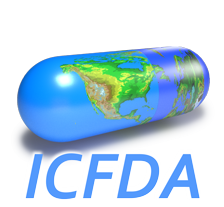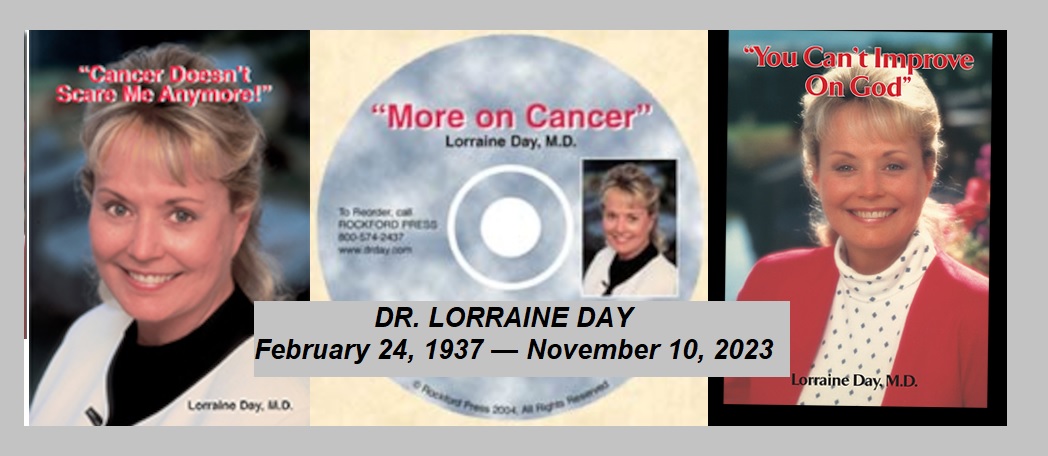“In a study published this week in the Journal of the American Medical
Association, U.S. researchers found that potentially harmful medication
errors are three times more likely to occur among hospitalized children than
in adults.”
April 28, 2001
Infants at risk from hospital drug errors
Study of medication use
Sharon Kirkey, National Post
Peter J. Thompson, National Post
David U, president of the Institute for Safe Medication Practices, Canada,
says most mistakes in medication stem from “system error.”
Cathy Landry hovered over her son’s hospital bed, trying to comfort him as he
recovered from minor foot surgery. She picked him up, held him, put him down
again. “Please fall asleep,” she whispered to her second-born. “Mommy’s
tired.”
Hours later, brights lights and commotion roused Mrs. Landry from the
mattress on the floor where she had been sleeping next to the 11-month-old’s
bed. “Is he OK?” she asked the nurses leaning over her baby’s bed. No one
answered.
Trevor Landry was dead.
Sometime the evening before, a nurse at the hospital in Brampton, had
mistakenly injected Trevor with two five-milligram shots of morphine. His
doctor had prescribed Demerol. The morphine shut the boy’s respiratory system
down. He died of cardiac arrest. Jurors at his three-week inquest ruled
Trevor’s death a homicide.
Every year in Canada, an estimated 500 to 700 people die from medication
errors while in hospital.
No one knows how many of those deaths – or how many near misses — occur in
children. But a new study suggests it happens more often than people had
believed.
In a study published this week in the Journal of the American Medical
Association, U.S. researchers found that potentially harmful medication
errors are three times more likely to occur among hospitalized children than
in adults.
The researchers detected 616 medication mistakes out of 10,778 orders written
over a six-week period at two large teaching hospitals — Children’s Hospital
Boston and Massachusetts General Hospital for Children.
The overall error rate of 5.7% was similar to what has been found in studies
of adults, but the number of errors that had the potential to harm was three
times higher, and they most often occurred in the youngest, most vulnerable
patients — newborns in the neonatal intensive care unit.
“These potential adverse drug events are best thought of as near misses or
close calls,” says the study’s lead author, Rainu Kaushal, an internist and
pediatrician at Brigham and Women’s Hospital in Boston. “Either the system
intercepts them before they reach the patient, or we’re just fortunate the
patient doesn’t suffer any [harm] to them.”
While the study involved American hospitals, there is no reason to believe
the findings would be any different had the hospitals been in Canada, experts
say.
“We don’t have any reason to believe we’re any safer,” says David U,
president of the Institute for Safe Medication Practices, Canada, an
independent group that is pushing for a national reporting system for
medication errors.
The Boston researchers believe nine out of 10 medication errors could be
prevented with simple reforms, such as computerized ordering systems that not
only eliminate one of the leading causes of mistakes — a doctor’s often
indecipherable handwritten scrawl — but alert doctors if, for example, the
dose being prescribed is too high or too low based on the child’s weight, or
if there is a risk the drug will interact dangerously with another medication
the child is taking.
The report is the latest to highlight a problem critics say has been kept
hidden too long. Two years ago, a landmark report by the U.S. Institute of
Medicine put the human toll of medical mistakes in hospitals at 98,000 deaths
a year. Extrapolated to Canada, that means about 10,000 people a year may die
as a result of care provided to them in a hospital.
But for years the attitude has been, “hide it, suppress it, don’t tell
anybody,” says Dr. John Millar, vice-president of research and population
health at the Canadian Institute for Health Information in Ottawa. That
culture was driven by fear of lawsuits and a closed profession, Dr. Millar
says, in which “doctor knows best and the doctors will review [mistakes]
themselves and take whatever necessary action to fix it.”
While the culture is changing — “fast,” Dr. Millar says — the result is
that no one can say with any certainty just how often medication errors occur.
And children, especially critically ill children, are the most vulnerable.
Children do not have the same internal reserves an adult does to absorb the
impact of a medication error. Take a premature baby in the neonatal intensive
care unit, Dr. Kaushal says. “Their kidneys and livers aren’t as well
developed, so if there’s even a small overdose, they can’t deal with it in
the same way” as a healthy baby. And babies can’t communicate. “So if a small
child has a side effect, for example, they’re itching [because] of a drug,
they can’t tell us.”
If Dr. Kaushal sees an adult with an ear infection, she prescribes 500
milligrams of a penicillin drug. “When I see a child, I have to take their
weight in pounds, convert it to kilograms, calculate a milligram per kilogram
dose for 24 hours, divide that by the frequency, and then I have the dose.”
Pharmacists have to dilute stock solutions or divide pills. The same drug can
be available in three different concentrations. Something as simple as poor
lighting can lead to labels being misread.
Potentially lethal mistakes are often discovered before the drug can be
given, but not always. Last week, a nine-month-old girl died in a Washington
children’s hospital because of a misplaced decimal point. Instead of
receiving two 0.5 milligram doses of morphine, the child was given two doses
of 5 milligrams each, or 10 times what the doctor had intended. According to
newspaper reports, the doctor had failed to follow hospital procedures
requiring him to put a zero before the decimal point.
In the study published this week, 18 of the mistakes that were detected
before the drug was administered were potentially life-threatening.
The researchers studied medication order sheets, drug administration records
and patient charts from 1,120 children admitted to the two hospitals during a
six-week period in April and May of 1999. They found 115 potential adverse
drug events (or “near misses”), and 26 adverse drug events. None of them was
fatal.
In many cases, errors were minor, such as a doctor’s failure to date a
prescription. But the most serious errors, such as prescribing the wrong
dose, occurred most often in the neonatal intensive care unit, where a baby’s
weight changes rapidly, making appropriate dosing particularly difficult, the
authors said. In addition, many of the drugs used in the ICU are not supplied
in dosages suitable for newborns and have to be diluted.
While the “near misses” accounted for only 1.1% of all errors detected, the
researchers say it was still three times higher than among adults. Most
involved incorrect doses. Others involved not specifying how a drug should be
administered, or a patient with an allergy to a drug, for example,
penicillin, being prescribed a penicillin-based medication.
The researcher said 93% of the errors could have been prevented with
computerized order entry systems and having pharmacists work full-time on
hospital wards. “The idea is to take pharmacists out of the pharmacy and
place them on wards so that they’re involved in rounds, they are involved in
decisions when they’re being made about what medicine to use and what dose
and what route” to give the drug, Dr. Kaushal said.
Some hospitals in Canada, including the Hospital for Sick Children in
Toronto, now use computer order entry systems and pharmacists on many units.
Still, it is estimated that fewer than 5% of hospitals in Canada do so.
Dr. Kaushal says he does not want parents to be alarmed. “These were two of
the finest pediatric hospitals in the country,” she said of the hospitals in
her study. But there are things parents can do, she said, to reduce the risk
of their children suffering a medication error while in hospital.
“Know why your child is on the medicines they’re on. Be a strong advocate for
your child. If you notice that one day your child is given a specific
medication twice and the next day they’re given that medication four times,
ask someone why that’s happening.
“If you think your child is having a side effect to a medicine, tell someone.
Often a parent is the first one who can pick up on something like that. If
your child seems to be a little itchy or seems to be irritable after getting
a medicine, let somebody know.”
David U, of the Institute for Safe Medication Practices, says in most cases
medication errors result from a “system error,” not any one individual’s
mistake. But he said hospitals need to take their cue from the airline
industry and encourage people to report when an error has been made without
fear of being punished and challenge authority when they see potential
mistakes occurring.
“In the airline industry, the pilot used to call the shots on everything. Now
the co-pilot or first officer has the right to stop the plane from flying or
landing if they find one of the conditions is not right. It should be the
same thing for health care, and it is starting to change.”
While hospitals have their own system for tracking and recording errors, “by
and large the reporting is done for statistical purposes,” he says. And the
information isn’t usually shared with other hospitals, “so next week you can
have a hospital one mile away have the same event happen.
“We need to set up a voluntary reporting system so that people can let us
know what’s happening out there, we can analyze the information, send it back
to the hospitals and learn from it so we can prevent these problems from
happening.”
Not a day, “not a second,” goes by that Cathy Landry and her husband,
Michael, do not think of Trevor, who would have started junior kindergarten
in September.
“I’m trying to say, ‘to err is human.’ But it’s very frustrating. It’s
maddening. It’s hurtful to know it happens every day to so many children,”
Mrs. Landry says.
Although her baby’s death in a Brampton hospital in June, 1998, was declared
a homicide, the verdict did not imply blame or intent on the part of the
nurse. According to reports, stress and fatigue may have played a role. The
inquest heard that at one stage two nurses were caring for 18 children on the
ward.
Trevor had been admitted for elective surgery to correct his club feet. “It
was routine surgery. We were supposed to be in and out,” his mother said. The
night before he died, she remembers how her normally verbal, active baby
wasn’t himself. “He was very quiet, kind of fussing.” When the nurses woke
her up and she looked down at her son, he was blue. “He looked choked. He was
on his back. It was awful.” The doctors and nurses spent 30 minutes trying to
get Trevor’s heart beating again.
“Every day we mention his name. Every day we talk about him. Everything
reminds me of him; everything connects with him,” Mrs. Landry says.
She believes every hospital should have to make public its rate of medication
errors. “I should be able to look at two or three hospitals’ records,” she
says.
“That should be handed to me: ‘Here, you decide.’ “



